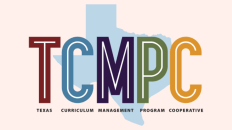Welcome to your first year as a Secondary Reading Language Arts teacher! Whether you just graduated from college with an education degree or you chose an alternative certification path – congratulations on landing your first teaching role! You’re gonna love it here in RLA!
It is completely normal to feel both excited and scared at the same time. As you find yourself thinking and maybe panicking about setting up your new classroom, I want to chat for just a second about the importance of establishing a daily independent reading routine for your students.
Giving students time to read during class is imperative to building lifelong readers. We need to show our students that we value reading by providing them with some time to do just that. Here is a hard truth – if you do not prioritize reading for your students, many of them, unfortunately, may not prioritize it for themselves.
Carving Out Dedicated Reading Time
My best advice is to carve out dedicated reading time at the beginning of each class period. Of course, you will need to take them to the library as soon as possible so they can check out a book. It is imperative that you set expectations on the first day of school that every student must have a self-selected book for independent reading. Speak to your campus librarian and try to arrange a library visit within the first two weeks of school.
When the bell rings, students know to pull out their books and read for 10 minutes. I called this our “Sacred Reading Time.” The teacher across the hall called it “OTTER Time” which stands for “Our Time to Enjoy Reading.” Another teacher called it “DEAR Time” which stands for “Drop Everything And Read.” Regardless of what it was called, this was a non-negotiable part of our classroom routine.
How much time do we devote to independent reading?
How much time you devote to independent reading really depends on how long your classes are. I usually only had 50-minute secondary RLA classes, which meant I had to be careful with my time management. “Sacred Reading Time” was an excellent way for the students to settle down, begin class, and read silently.
During those 10 minutes, I would take attendance and then either read with them or perform individual reading conferences. Reading while the students read is a fantastic way to model independent reading behavior. Sometimes, I would do a mini book talk when time ended because I just HAD to share something exciting from my own reading.
Set the Expectations Early
I made sure that all my students knew the non-negotiable expectation was for them to always have a self-selected book and read silently for the first 10 minutes of class. My behavior expectations were explicit. They were allowed to move spaces and even sit on the floor while reading, but they had to be silent with their books in hand, and they had to be reading and not on their phones or talking to their friends.
If someone showed up without a library book, they were always welcome to borrow one from my bookshelf. It was never okay to work on homework for another class; after all, this reading time was SACRED! When students finished their books, I allowed two at a time to visit the library to check out something new.
Overall, I remember there were a few shenanigans devised by some students to avoid reading, but really not many. My intent for “Sacred Reading Time” was to give students time to read books they chose for themselves. This was an intentional effort to capture their interests and help build book love. However, I did hold them accountable for the use of this class time. While I don’t believe in reading logs, I do believe in accountability.
In my next blog, I’ll be discussing how I held secondary RLA students accountable for their “Sacred Reading Time” and how it was a small but important piece of a very big reading/writing puzzle.
Visit our Reading Language Arts website for information and the latest training opportunities. We create powerful learning experiences for teachers that are active, learner-centered, and responsive to student needs. For specific help with Secondary RLA, contact Kelley Weigand.

Kelley Weigand
Kelley Weigand has 18 years of classroom experience teaching reading and writing at the secondary level. She is an instructional leader, inquisitive learner, enthusiastic educator, and data nerd who is passionate about building campus culture and teacher capacity. Kelley is currently the Secondary RLA Specialist on the Content Services Team here at Region 13.





Add comment